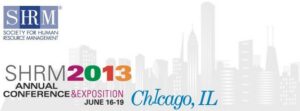
Stronger! #TChat Preview #SHRM13 Edition
The TalentCulture community is heading to Chicago — along with 18,000 HR professionals who are gathering to discuss the future world of work. Join in, as we work the floor at #SHRM13!

The TalentCulture community is heading to Chicago — along with 18,000 HR professionals who are gathering to discuss the future world of work. Join in, as we work the floor at #SHRM13!

How can organizations encourage collaboration? And why does it matter? The TalentCulture community opens up about open leadership…

How can we create a more engaging experience for tomorrow’s workforce? And what do today’s graduates see ahead in their careers? We’ll explore this and more, LIVE at SHRM13. Join us!

Why does HR keep asking for a seat at the table? We’re already there. The big question now is: What next? That was the focus this week at SHRMTalent and at #TChat forums…
The ranks of the long-term unemployed are swelling. Meanwhile, employers struggle to fill available positions. What’s wrong with this picture?
Live from the Society of Human Resource Management Leadership conference in our nation’s capitol – the weekly #TChat Twitter forum tackled issues at the intersection of business leadership, HR and public policy…
Without getting overly political, can we talk about how public policy is re-shaping the world of work…?
Once I dipped my toe into the Twitter pool, I knew there was no turning back. And now here I am one year later, writing the recap for the very chat that indoctrinated me into the social world of work…
Business is messy – and it’s only getting messier. So perhaps that’s where HR can truly make a difference today – to know the business, staff the business, teach the business and grow the business – all predicated on managing the messy yet mingled bad with the good. We can lead the way in helping business learn from its mistakes…
Human Resources…what does it mean to most people in today’s workplace? HR is usually seen less a curators of workplace culture and more as the police brought in to direct traffic or quell a riot. So how do we change it up? What can we do to add value?
Innovation and entrepreneurship, paired with good old-fashioned hard work, have created a new era of “fringe” benefits. But despite all the fancy tricks organizations offer these days, it seems like they may not get it. Recognition 101 = Listening.
Successful talent strategy requires much more than filling open job requisitions. Look closer at your organizational culture — what does it say about your company?
Editor’s Note: This post originally appeared on TLNT.com Maybe you missed it in the end-of-the-year rush, but late last month, I was a guest on
While much said and written about discrimination due to race, religion, disability, and gender in general, the bias for and against beauty is often overlooked in the world of work. It’s worth closer inspection by leaders and others in today’s workplace…
Within HR and Recruiting, for example, a new technology is unfolding – one which will, in my opinion, change how individuals find work and how companies recruit. Talent Communities are here, driven by the powerful engines of social media, search, big data, ubiquitous computing and social communities.Talent communities are now replacing what many recruiters have traditionally called talent pools. Simply having a database of resumes to sort through to make a talent match has transformed into what we know as social recruiting.
Originally posted by Charles Purdy on MonsterThinking Blog If you’re in an HR or recruiting position, you likely interact with a lot of job seekers
What makes a great recruiter? Academic training? On-the-job training? Trial and error? The TalentCulture community weighs in…